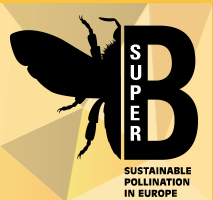The North American Pollinator Protection Campaign (NAPPC) is seeking proposals for research related to improving the health of honey bees. Proposals should focus on research to manage, suppress, and eradicate Varroa mites, small hive beetles, and other pests, pathogens, and diseases contributing to colony losses. Summaries of previously funded projects can be found at http://pollinator.org/honeybee_health.htm. Review and selection of proposals will be conducted by members of the Honey Bee Health Task Force.
The NAPPC anticipates supporting several proposals, students and post-doctoral research fellows are encouraged to apply. Funds must be used within a one-year period. Focused, targeted projects with a high likelihood of providing tangible results that can be applied to improving bee health are preferred. Proposals providing valuable extensions of previously funded projects will be considered. Principal investigators of funded projects will be expected to present the results at the 2016 NAPPC meeting. Conference travel and registration costs may be taken from the grant award.
Priority Areas
The Honey Bee Health Task Force has identified seven priority areas for funding, though other areas will be considered as well.
- Effects of pathogens and pests on honey bee behavior, physiology and/or colony health; including the development of novel methods to mitigate these effects, such as RNAi technology.
- Effects of nutrition on pest, pathogen, and disease incidence.
- Effects of pesticides on pest, pathogen, and disease incidence.
- Effects of parasite and pathogen spillover from other bee species to honey bees.
- Development of approaches for genetic stock improvement of honey bee populations to enhance resistance to pathogens and parasites.
- Effects of climate or environmental variables on pest, pathogen, and disease incidence.
- The development of diagnostics or indicators for the presence of pests, pathogens and diseases that affect honey bee health, particularly those that can be used by beekeepers.
More information on how to apply is available here.


